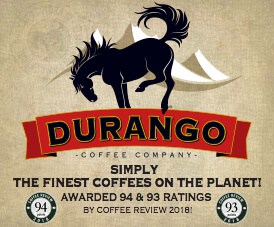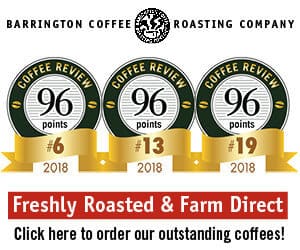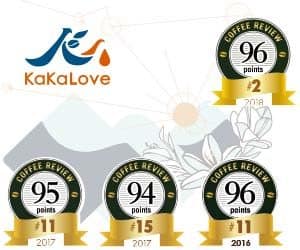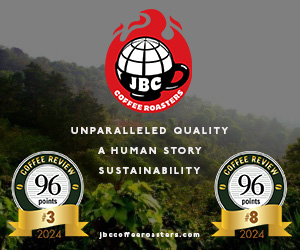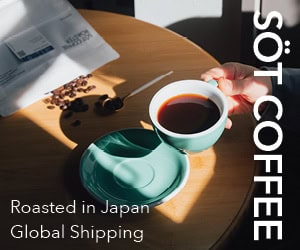When Starbucks, bowing to changing tastes in coffee, debuted two “Blonde” medium-roasted blends a couple of weeks ago, reaction among the blogging and tweeting cadres of coffee observers was predictable. One of our readers wrote that she didn’t want to bias us before we tested the new Starbucks blends, but for her they tasted like “cardboard and water.” She added that she would prefer to remain anonymous, however, because “Those Starbucks people are everywhere.”
Of course, the danger lies not in writing something negative about Starbucks, but in writing something positive. Starbucks’ size and success has thoroughly polarized coffee drinkers. On one hand are those who don’t read or think much about coffee and merely drink the stuff. Many of these folks are so mesmerized by the Starbucks’ brand that they actually not only manage to drink Starbucks VIA instant coffees without gagging, but fork out an outrageous premium for them as well. On the other side loom the crowd of coffee aficionados and aspiring aficionados for whom everything Starbucks is absolutely, uncategorically evil. Not just bad, not even mediocre, but the steaming spawn of coffee malevolence. Substituting knee-jerk coffee ideology for actually tasting something has always deeply offended me. On the upside, however, most of these critics actually went into a Starbucks store and tasted a free cup, an excellent start, though the suspicion remains that they may not have given the coffee inside the cup much of a chance given there was a smirking green mermaid on the outside.
Blind Tasting the Steaming Spawn of Coffee Evil
So when we decided that we would do some blind tasting, not only of the two Starbucks “Blonde” medium-roast blends but also of two newly launched medium-roasted blends from famously dark-roasting Peet’s Coffee, we did so with mild trepidation. If the Starbucks Blonde blends turned out lousy when tasted blind we would be safe – we simply would be supporting the convictions of the Starbucks bashers. After all, those who are hypnotized by the Starbucks brand don’t read about coffee anyhow. But if these new medium-roasted Starbucks blends turned out to be, say, pretty good, maybe very good, then, well, at least we can take consolation that when people scream start screaming at us online the spit won’t reach our side of the computer screen.
We benchmarked these new medium-roasted Starbucks and Peet’s blends against a small assortment of competing medium-roast blends. From the mass market side we added a Dunkin’ Donuts Original blend; from the upmarket side a total of three roughly comparable blends from Counter Culture Coffee and Stumptown Coffee Roasters, both acknowledged leaders of the new wave of medium-roasters.
Not Bad, Just Tired
To our relief and also to our regret (controversy is always good for attracting readers) the Starbucks blends were neither all that good nor all that bad. They certainly represented a more auspicious debut than the wretched Starbucks VIA instants. The Veranda Blend was a little woody and monotoned but basically a sound, balanced coffee that we rated 85; the brighter, more vivacious, but still slightly tired-tasting Willow Blend came off the table at 86. For the blogging class of coffee drinker these scores still may insult expectation – the preference would be to see everything labeled Starbucks as tasteless disaster. These blends were neither tasteless nor disastrous, at least not the samples we cupped; just tired and limp. Curiously, they appear to share the same weakness as the Starbucks dark-roasted blends have displayed over the last few years: they are clean and free of taint but half-hearted, tentative, shallow. Perhaps this is a deliberate strategy on the Mermaid’s part – don’t take anything to extremes, settle in the middle somewhere so you don’t surprise or offend anyone. Or perhaps the strain of meeting Starbucks’ vast volume needs simply nets green coffees that through the heroic efforts of the Starbucks coffee buyers manage to be taint-free and balanced, but still, given the volumes, ordinary and/or faded. Or – third possibility – the roasted coffee had been sitting in the shiny new white and yellow bags too long.
Missing the Taste of Morning in the Orchard
Certainly, however, those readers who have come to enjoy small lot coffees from the newer roasters will not find in the Starbucks or the Peet’s one of the great pleasures of fine medium-roasted coffees: the taste of morning in a coffee orchard, the sweetness of honey and flowers anchored by the tart bite of ripely acidy fruit. It promises to be there, it’s signaled in the aspiration of the Willow Blend (“Bright & Clean” the bag says), but in fact it isn’t there, or if it is, it is barely hinted at. Nor did we find anything like it in the much more authoritatively structured Peet’s Café Solano blend (89). The Café Solano displayed a complex aroma, rich acidity and a smooth, fullish mouthfeel, though ultimately the aromatics faded as the coffee cooled toward a rather emptyish finish.
When we moved to the rounder and more caramelly medium-roasted aspiration of the Starbucks Veranda Blend (“Mellow & Soft”) and the Peet’s Café Domingo (“Smooth, Balanced and Medium-Bodied,” rated 86), similar issues of reality failing aspiration surfaced. As I reported earlier, the Starbucks Veranda struck us as a passable, drinkable coffee, but our samples definitely were more flat than “mellow,” more muted than “soft.” Peet’s Domingo blend was more energetic than its Starbucks counterpart, but still was simple aromatically. As an aside, both of the Peet’s blends represent a sort of roast-level compromise – rather than true medium roasts, they display a slight hint of the roasty, gentle pungency of coffees brought just to the “second crack” – in other words, they were technically medium-dark roasts rather than a medium roasts.
The Upmarket Options
I wish I could report that the three Counter Culture and Stumptown blends collectively soared by comparison to the Peet’s and Starbucks. They didn’t quite. But they certainly were more distinctive, more forthright in their coffee statement, less faded, and, at least to us, dramatically to incrementally better. And one of the three did soar, to a 91 rating – the Counter Culture Farmhouse Organic. This blend squarely hit what the Starbucks and Peet’s blends missed: It is a coffee with uncompromising character that is fully revealed by a roast light enough to let us taste the fresh fruit and floral notes and (in the case of this blend) a pungent cocoa. Furthermore, it is a seasonally based coffee so presumably it will continue to taste fresh whenever it is offered. Of course the Starbucks and Peet’s are probably also of necessity seasonal coffees in the sense that their formulas doubtless shift through the crop year, but I do not sense the forthright foregrounding of fresh green coffees that I taste in the Counter Culture blend. As a bonus, the Counter Culture blend is organic.
True, the two Stumptown blends rated only incrementally better than the Peet’s and Starbucks counterparts – 89 for the Holler Mountain Blend and 88 for the House Blend. The point here, though, is that first, both tasted like genuinely fresh-roasted coffee (we bought them via the Internet using standard shipping) produced from fresh, unfaded green beans, and second, they embodied more individuality than the Starbucks offerings in particular; they were strong, unapologetic coffee gestures. Of course I can easily imagine that these coffee gestures – the rather rough, robust character of the Stumptown Holler Mountain blend, the rich but tart, slightly astringent character of the House Blend – will not please everyone. But their forceful individuality highlights the fundamental difference between buying a medium-roasted coffee at one of the newer companies that specialize in producing scores of them and buying one of the pairs of limited, don’t-rock-the-boat medium-roasted options at Peet’s and Starbucks. With the former you have a whole medium-roasted sensory world open to you, complex, shifting, perhaps challenging at times, whereas with Peet’s and Starbucks you have only two pairs of rather cautiously expressed medium-roasted options.
The Dunkin’ Challenge
The real competition, it seems to me, is not between Peet’s and Starbucks and the new wave of upmarket medium-roasters, but between the Peet’s and Starbucks medium-roasted blends and that American mainstay, the Dunkin’ Donuts Original blend. This is a competition for the attention of drinkers of traditional, medium-roasted coffees who roll their carts through the supermarket looking to pick up a classic American all-Arabica breakfast cup rather than a bland, faintly foul-tasting can of Robusta. Over the years we’ve rated the Dunkin’ Donuts Original blend anywhere from 87 to a dismal 79 (for a badly, probably atypically tainted sample we reviewed back in 2004). Our most recent Dunkin’ Original review preceding this one generated an 86. This month’s sample came in at 85: delicate, balanced, but, like the Starbucks blends, aromatically simple and subdued.
The Roast Style Pendulum
An historical aside for those who are surprised by the fuss about two famous coffee companies producing a pair of medium-roasted (rather than dark-roasted) blends for the first time. When specialty or fancy coffee first took off starting in the 1970’s through the 1990’s, it was dominated by darker roasted coffees. The dark, shiny-surfaced, pungent roast style pioneered by Alfred Peet in the early 1970’s was adopted by the early pre-corporate version of Starbucks. Subsequently a newly ambitious, corporate Starbucks, abetted by the many smaller roasting companies that grew up around the same time, managed to turn the dark-roast style into the norm for North American specialty coffee. The message absorbed by the less attentive of the coffee drinking public seemed to be: If it’s dark-roasted it must be special, sophisticated, intense, sexy and European, whereas if it’s medium-roasted it’s your daddy’s supermarket coffee.
By the late 1990’s, however, the roast-style pendulum had slowly started to swing back toward the light side. This happened at both ends of the market: at the high end with pioneers of the medium-roasted style like Terroir Coffee, and at the mass end of the market with the expanding popularity of the Dunkin’ Donuts blend and the successful debut of the upgraded McDonald’s premium drip blend.
Ever since then the Starbucks dark-roasted style has been squeezed from both top and bottom: at the top of the market from an eruption of popularity for new medium-roasting, small-batch-roasting companies, and at the supermarket end by the growing national popularity of Dunkin Donuts and its bright, no-nonsense medium-roasted traditional American breakfast blend.
How effective the Peet’s and Starbucks new blends will be in filling in the middle-of-the-market demand for medium-roast coffee remains to be seen. I suspect these blends may be too little too late, but I didn’t predict much success for Starbucks VIA instant, and look what those little overpriced tubes are doing.
2012 The Coffee Review. All rights reserved.

